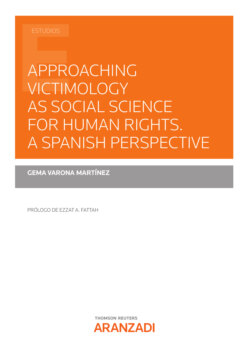Читать книгу Approaching Victimology as social science for Human rights a Spanish perspective - Gema Varona Martínez - Страница 22
1.3.3. Criminal law typologies
ОглавлениеAccording to Spanish criminal law we can classify victims in three major groups:
A. Victims of interpersonal violent crimes, from international crimes to terrorism, organised crime and any interpersonal violent crime, including those negligent ones. In the section on green Victimology, we will note that other beings and ecosystems can also be victims of violent crimes, at least in a victimological sense.
B. Victims of economic crimes, from common property crime to economic and white-collar crime where we might find diffuse victimisation, that is, the whole society is thought as the victim (beyond the notion of morality in crimes without victims, as expressed by Schur, 1965).
C. Crimes against public health related to the different forms of diffused victimisation.
In these three categories, for example, cyber-victimisation is distinguished by the digital means of commission or the target of the victimisation, even if the protected juridical good or public interest might be a classical one.
According to the 2019 Annual Statistics Report of the Ministry of the Interior, in 2019 1,173.599 victimisations were registered, of which 105,574 were family violence ad 77.861 intimate partner violence (IPV) perpetrated by a man against his female partner or ex-partner (what is legally defined as gender violence in Spain).
Image 11: 2019 Annual Statistics Report by the Spanish Ministry of Interior
